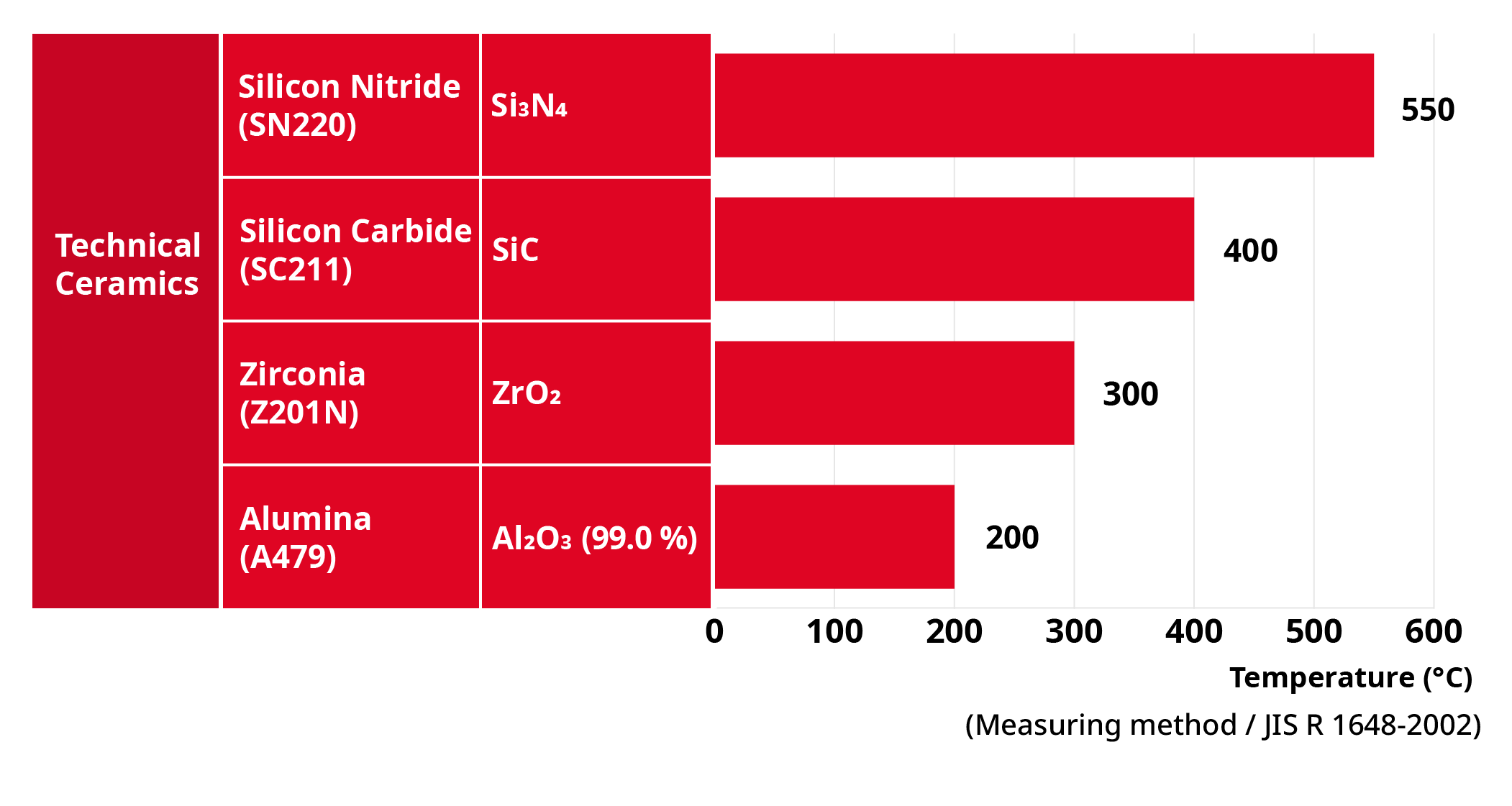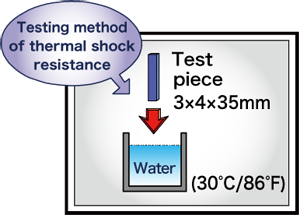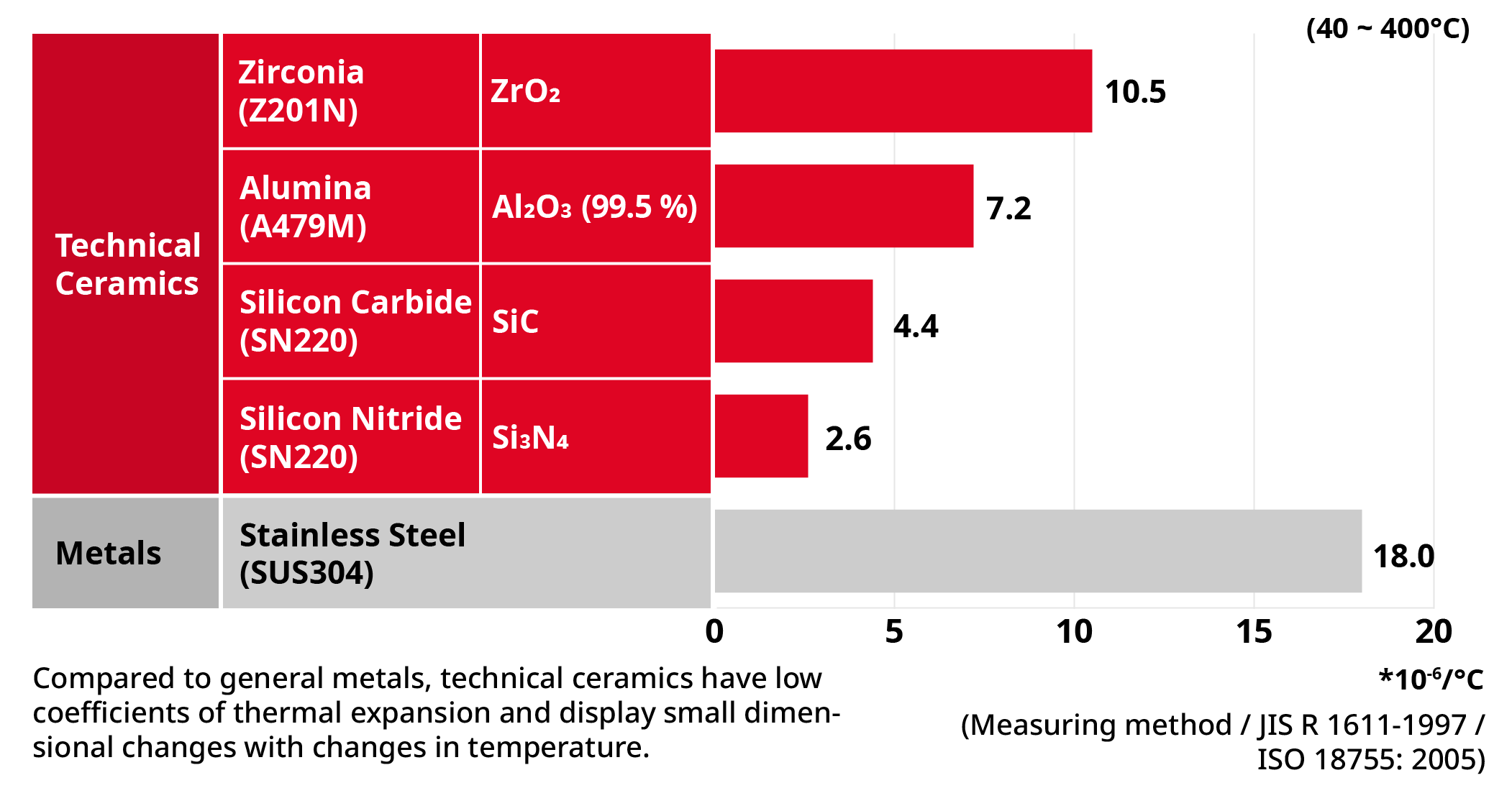Technical ceramics
Superior thermal properties
Compared to metals, components made of technical ceramics retain their shape even at high temperatures.
Plastic deformation under constant load at high relative temperatures is known as creep. The deformation can have various causes, but is generally very limited in technical ceramics due to their atomic structure. In addition, ceramic materials retain their high strength even at high temperatures.
Overall, the impressive thermal properties of ceramics contribute to their use in many industries as an indispensable material for applications with special requirements in terms of temperature stability and heat transfer.
Heat resistance
Conventional silicate ceramics, including bricks and tiles, are known for their ability to withstand high absolute temperatures.
Technical ceramics, however, are far more heat resistant than these materials.
Typical maximum application temperatures for aluminium are max. 300 °C.
Conventional steel drastically loses its strength from around 500 °C. Conventional silicate ceramics retain their properties up to 550 °C and can also be used at temperatures of up to 800 °C for short periods. High-performance ceramics, on the other hand, can be used at temperatures of up to 1800 °C.
Thermal shock resistance
Thermal shock resistance describes the resistance of a material to temperature fluctuations.
To determine the thermal shock resistance of a material, the ceramic is quenched from an elevated temperature, To, to a lower temperature, Tu. The maximum temperature difference (ΔT = To-Tu) that a material can withstand during rapid cooling without defects is referred to as thermal shock resistance.
Rapid cooling results in large temperature differences between the core and the surface of the test specimen, which leads to stresses in the material. If these stresses exceed the strength of the material, cracks appear or existing cracks spread. Depending on the thermal shock resistance, a different number of cycles can lead to failure of the test specimen. The temperature differences are determined by the thermal conductivity of the ceramic and by the heat transfer coefficient between the material and the cooling medium. The stresses generated are determined by multiplying the Young's modulus, the coefficient of thermal expansion and the temperature differences between the core and the surface of the ceramic.
Thermal shock resistance (water immersion test)
You are interested in our products or have a specific project enquiry?
Thermal expansion
Typical technical materials increase their volume when heated. This phenomenon is known as thermal expansion. The coefficient of thermal expansion is used as a parameter for the change in volume over temperature. Materials with a high coefficient of thermal expansion increase in volume more than materials with a low coefficient of thermal expansion for the same temperature difference. As technical ceramics have a low coefficient of thermal expansion, their volume change with temperature changes is small.
Thermal expansion depends on the composition and condition of the material and is therefore a material-specific value. The coefficient of thermal expansion is mainly determined by the strength of the bonds between the atoms that make up the materials.
Thermal expansion coefficients
Thermal conductivity
Thermal conductivity is a material property that indicates how well a material transfers heat. In technical ceramics, there are materials with high thermal conductivity, which conduct heat well, and those with low conductivity, which conduct heat less well. Aluminium nitride and silicon carbide conduct heat particularly well. Aluminium nitride is used in housings for semiconductors that radiate large amounts of heat, but in which no heat build-up is allowed to occur. Zirconia does not conduct heat effectively and has a low thermal conductivity coefficient (about 1/10 of stainless steel).
With ceramics, factors such as internal porosity, grain boundaries and impurities can influence this property. By controlling these factors, the thermal conductivity of technical ceramics can be increased or decreased.




